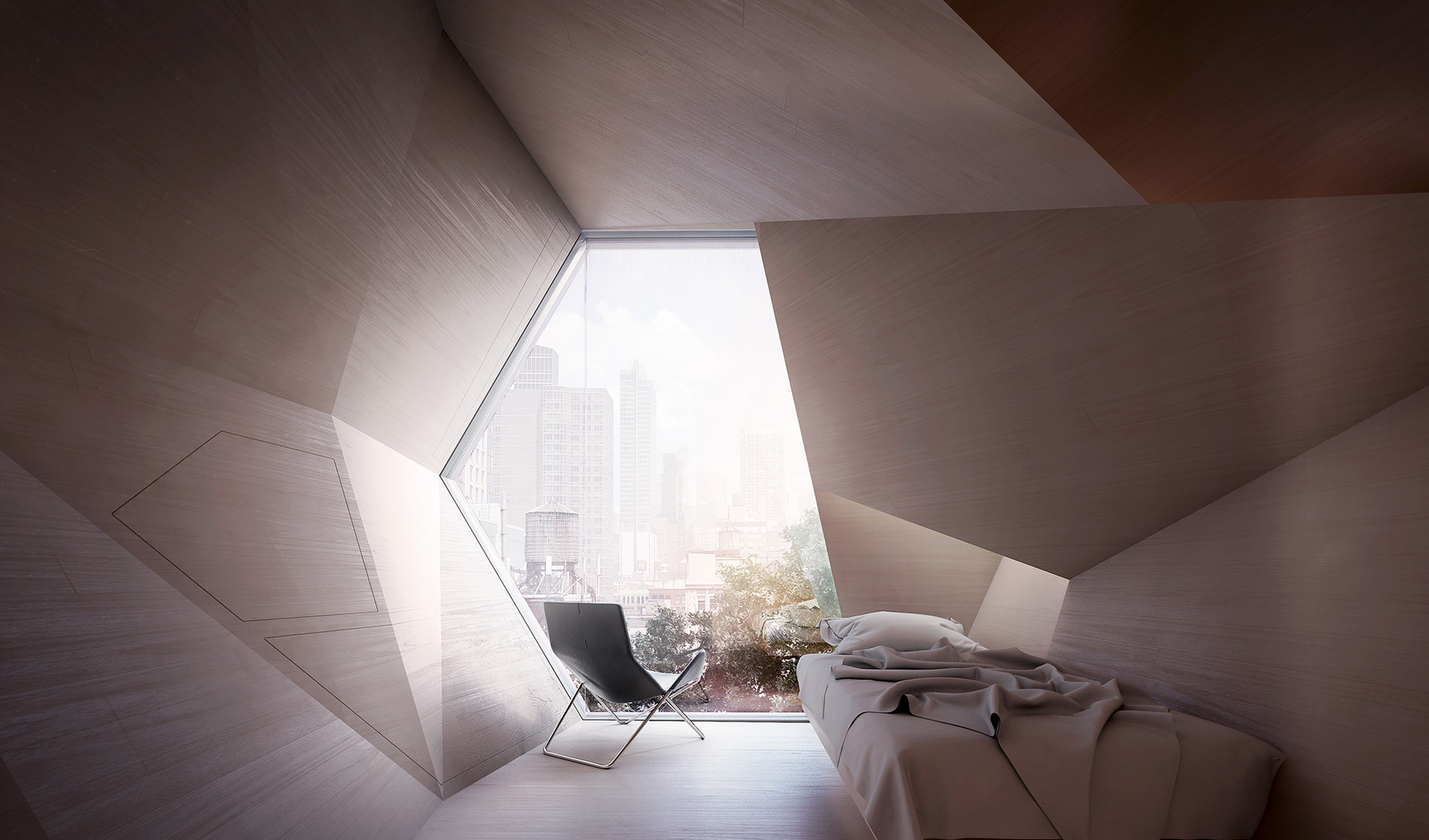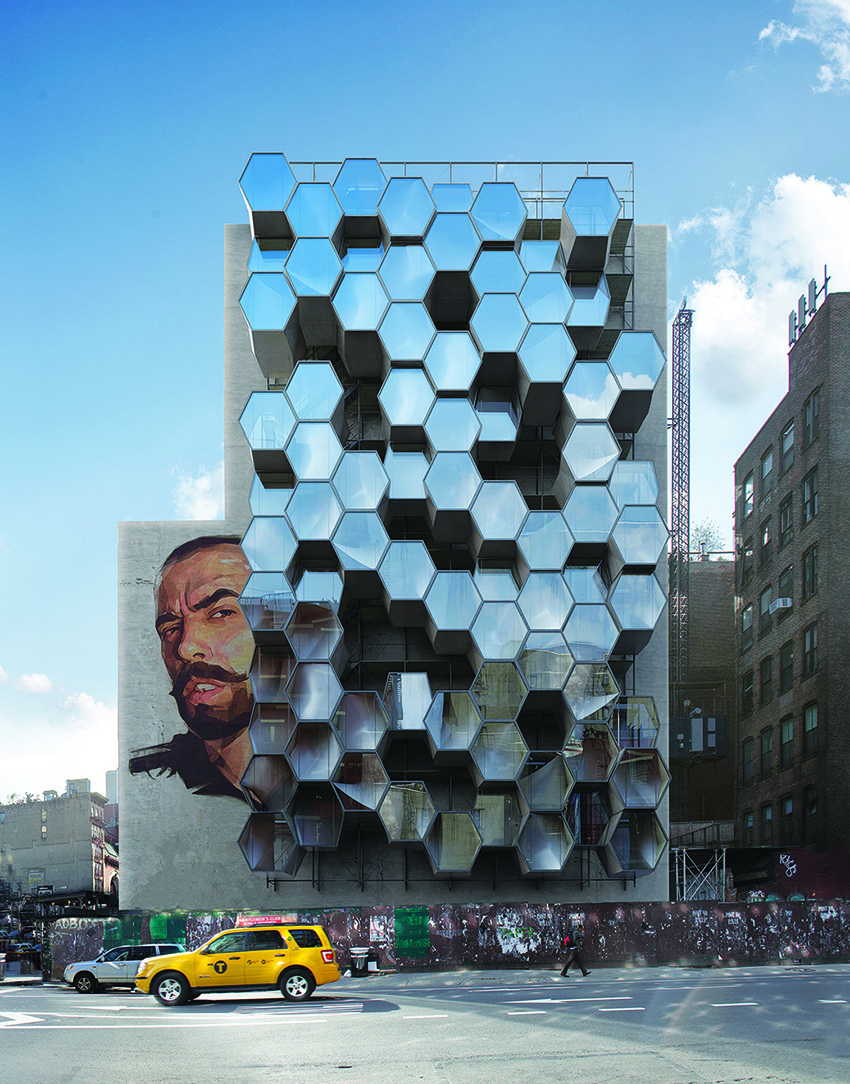
By Kayt Sukel
On a cold winter’s night in January 2023, the U.S. Department of Housing and Urban Development recorded more than 650,000 people in the country experiencing homelessness during its point-in-time count — the highest number on record since it started collecting these data in 2007. In New York City, the number of people seeking shelter continues to grow, yet the combination of skyrocketing rents and limited space make it difficult to find places to house them.
Now, Framlab, a design and innovation consultancy, has come up with a unique temporary housing proposal called “Shelter with Dignity,” which makes use of something the city has in excess: “vertical land,” or the empty walls of existing buildings.
Framlab’s design includes flexible hexagon-shaped housing modules that can be connected to building facades to form “clusters of suspended micro-neighborhoods,” according to the company’s website. Andreas Tjeldflaat, design engineer and founder of Framlab, says he and his colleagues came up with the distinct honeycomb shape through an iterative process.
The design has several advantages, one of the main being that it “yields maximum volume and minimum weight in relation to the perimeter area,” Tjeldflaat explains. “It also creates a beautiful and practical interior space, as well as a distinct facade expression.”

The exteriors of the honeycomb pods would be constructed from steel and oxidized aluminum to withstand seasonal changes, while the interiors will be shaped by 3D-printed plastic modules, which will allow for customization of the spaces.
In addition, unlike other shelter offerings in the city, each pod will offer the person staying within it privacy and comfort; the pods will also accommodate the “integration of environmental wellness technologies and sensors, such as smart lighting and wireless monitoring of vital signs,” Tjeldflaat says.
One of the key aspects of the project is its mobility. Each hexagon can be easily and quickly disassembled and moved as needed. “This allows the project to be a place-based solution,” Tjeldflaat explains.
Another positive aspect is flexibility. “Rather than requiring people who are homeless to move to another borough ... for shelter, this (design) allows people to stay connected to their local community and leverage natural support networks,” Tjeldflaat says.
Solving the U.S. housing crisis will require multipronged strategies that can help overcome physical and social barriers, notes Tjeldflaat. Shelter with Dignity can play a part in the solution.
The project is still in the conceptual phase, but Framlab plans to fabricate full-scale prototypes of the units to demonstrate their feasibility.
Kayt Sukel is a science and technology writer based outside Houston.
This article first appeared in the November/December 2024 issue of Civil Engineering as “Designing for Dignity.”



